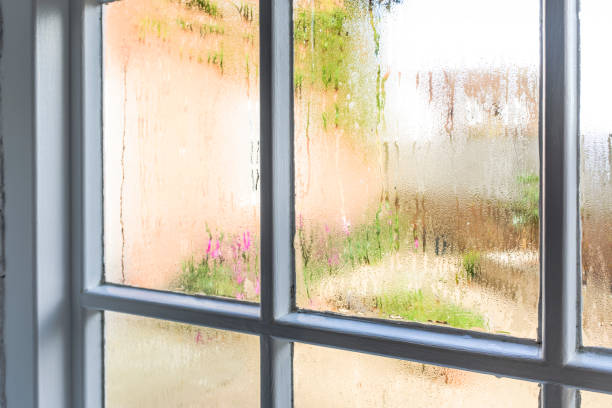If you want to stop condensation and mould forming on your windows this autumn, this is the way to do it!

As the weather gets colder, you might notice damp forming on your windows. It’s important to get rid of it before it becomes a bigger problem in the winter.
As the weather gets colder and wetter, we’ll all be facing a common problem in our homes: condensation and mould.
It’s not unusual to see condensation on windows in the autumn. If you don’t tackle it, this dampness can quickly lead to mould, which is not only an eyesore but also a health hazard. It’s best to tackle this now to avoid any damage this winter!
Condensation happens when the warm, moist air inside your home touches a cold surface, like your window panes. Warm air contains more water vapour, so when it suddenly cools on contact with the glass, it turns into water droplets. If you don’t get rid of them, these droplets can create an environment that’s perfect for mould, peeling wallpaper, damaged paintwork and so on.
Ventilation and humidity control are key to preventing condensation.
When you see droplets appear, don’t leave them lying around. Just dry them with a well-absorbent cloth and you’re good to go. And don’t forget to air your home every day, even in autumn and winter. Even so, condensation can still occur. Rather than constantly wiping away condensation, there are ways of getting rid of it. The rooms that tend to get the most condensation are often the bedroom, kitchen and bathroom. Here’s the best way to tackle this in each room.
It’s not unusual to see condensation on bedroom windows at night because people often turn off their heating while they sleep, which can cause the room temperature to drop quite a bit. Just turn your radiators down, rather than turning them off completely. It’s also a good idea to avoid drying clothes in this room, as this will increase the humidity, making the room damp and uncomfortable while you sleep.
As you might expect, the kitchen is a big contributor to the humidity in the house, thanks to all the cooking appliances and steam that’s created when cooking. The simplest way to cut down on condensation on kitchen windows is to make sure you use an extractor fan when cooking and to use pot lids to stop steam building up. It’s also a good idea to open the windows when cooking and keep the kitchen door closed if you can.
If you want to keep the steam in the bathroom and stop it spreading throughout the house, just make sure you have a tight-fitting shower curtain or screen. This will keep the steam in one area and stop it spreading throughout the room and the house.

